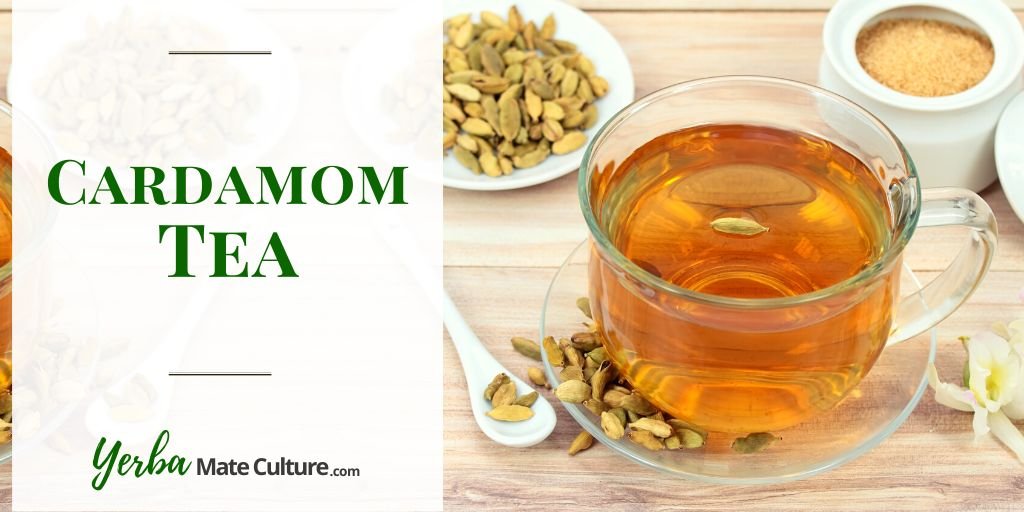Cardamom tea, a royal beverage with origins dating back thousands of years, might just be the novelty you’ve been waiting to try.
Known for its unique aroma and taste, cardamom is a spice that holds a significant ranking in the culinary world. This delightfully aromatic tea not only provides a sensory experience but also offers several health benefits.
As I started exploring the world of cardamom tea, I became enamored with its complex flavors and rich history. Its versatility enables you to brew it in various ways or even create new recipes to share with friends and family.
In this guide, I will tell you all about different types of cardamom teas, how they taste, and how to make them at home.
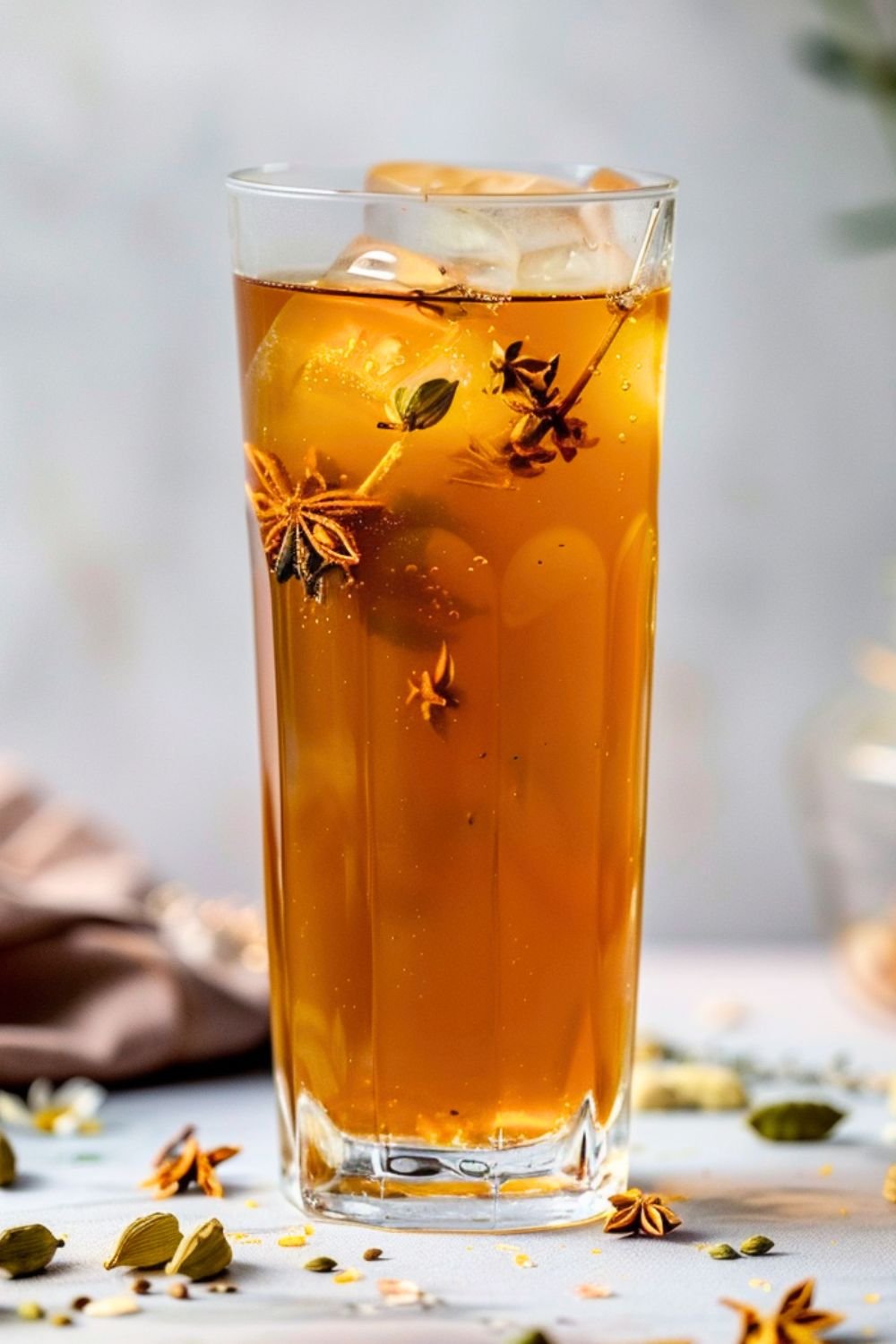
What Is Cardamom Tea
Cardamom tea is a delightful beverage made by brewing cardamom pods in hot water or milk and other ingredients like black or green tea. Combining the distinct taste of cardamom with tea, this drink offers a captivating experience for your taste buds.
Cardamom, in general, can be found in two primary types: green cardamom (Elettaria cardamomum) and black cardamom (Amomum subulatum).
Both green and black cardamom can be used in the preparation of cardamom tea.
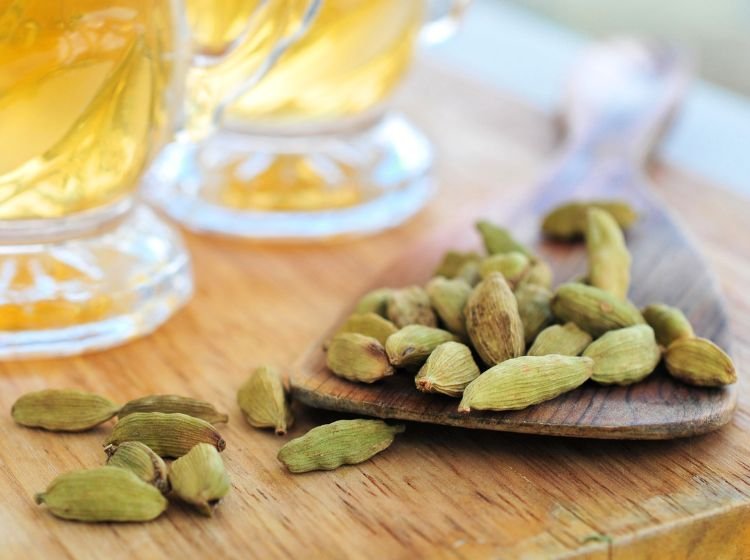
Green cardamom, also referred to as true cardamom, is more common and hailed for its sweet and aromatic flavor profile. Green cardamom is typically used in both sweet and savory dishes and beverages.
Black cardamom, often called Bengal cardamom, is recognized for its larger, dark brown pods and a bolder, smokier scent. While black cardamom is also used in cooking, it is more common in savory dishes, and its unique flavor may not appeal to everyone.
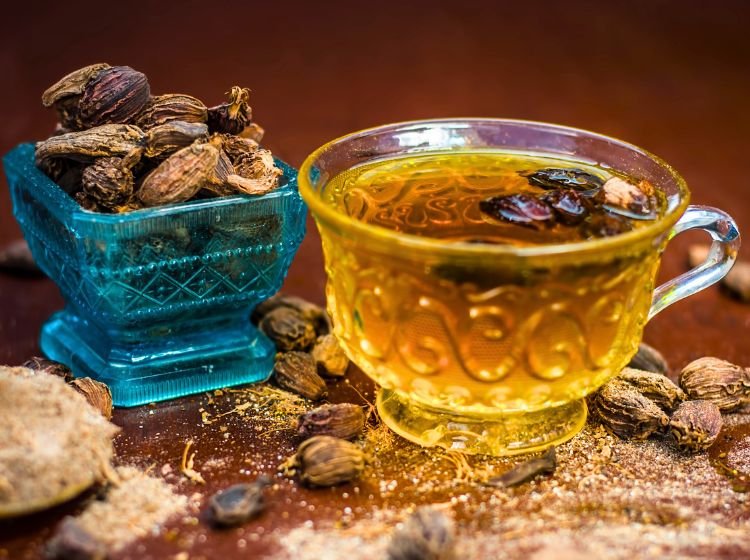
A less common variety, white cardamom, has a milder flavor and aroma, with a slightly sweet and floral taste. It is often used in desserts and baked goods, as well as in savory dishes such as curries and stews.
When making cardamom tea, you have various options to choose from. You can use either green or black cardamom, depending on your flavor preferences.
Additionally, cardamom tea can be blended with other types of ingredients, such as black tea or herbal ingredients, to further enhance its taste and aroma.
Key Ingredients of Cardamom Tea
The signature flavor of cardamom tea is created by infusing hot water with whole, crushed, or ground cardamom pods or cardamom seeds.
Here are the three different types of cardamom you can use:
- Green cardamom has a unique and distinct flavor that is both spicy and sweet. It also has some citrusy and minty notes and the intense flavors will bring warmth to any drink or dish it’s added to.
- Black cardamom, on the other hand, has a flavor that can be described as intense, smoky, and pungent.
- White cardamom has a milder flavor and aroma, with floral and woody notes.
The primary ingredients include hot water, cardamom pods or seeds, and sugar or other sweeteners to taste.
Many people also choose to add other spices like cinnamon, ginger, cloves, and star anis to enhance the tea’s flavor profile.
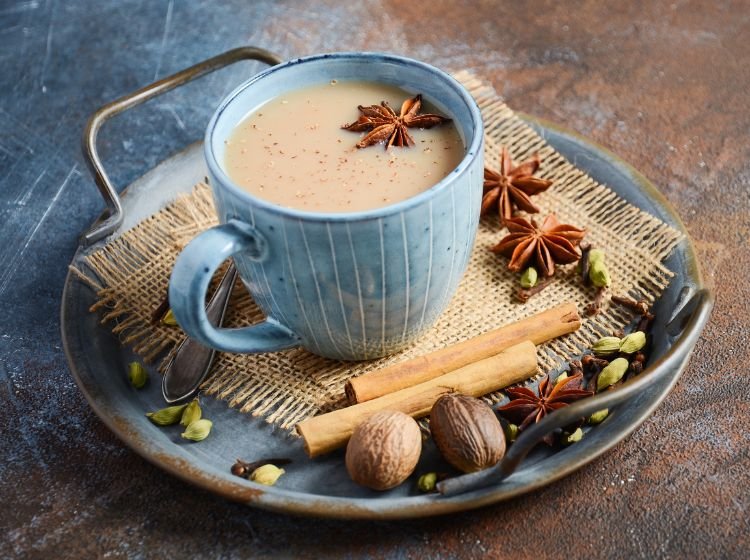
If you prefer a creamier cup of cardamom tea, add milk to the mix. Milk not only adds richness to the tea but also mellows the intensity of the cardamom and other spices.
Mixing green cardamom with black tea, milk and the spices mentioned above creates a unique taste that is reminiscent of chai, a popular tea blend originating from India.
How to Make Cardamom Infused Tea
To make cardamom tea, you’ll only need a few ingredients and tools.
I will first explain how to make a simple cardamom tea and later I will share more complex recipes with interesting flavor combinations.
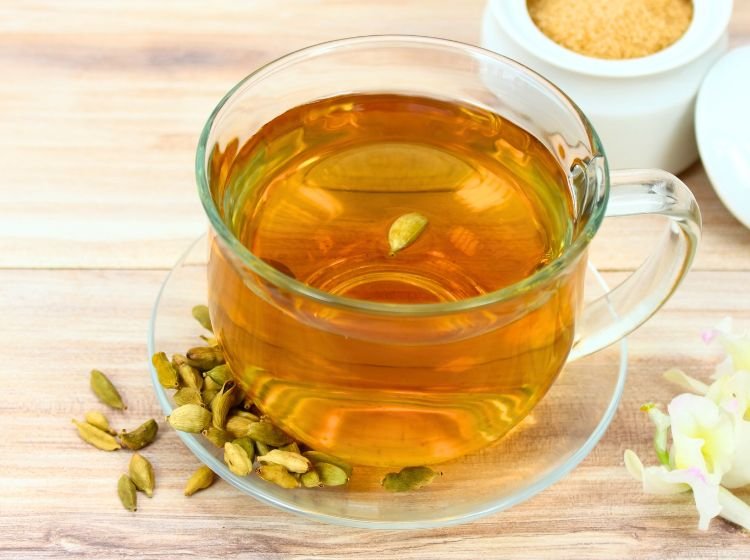
You will need the following items:
- Cardamom pods (or ground cardamom)
- Black tea or green tea (optional)
- Star anise (optional)
- Honey (optional)
- Hot water
- A teapot (or saucepan)
- A tea strainer (if using whole cardamom pods)
Step 1: Prepare the ingredients
For a single cup of cardamom tea, you will need 1 cup of hot water and 3-4 cardamom pods or 1/4 teaspoon of ground cardamom. If you’re using whole cardamom pods, use a spoon to lightly crush the pods to release their flavor.
Step 2: Boil water
Bring a cup of water to a boil in a teapot or saucepan. Once the water has reached boiling, add the cardamom pods or ground cardamom (and star anise) to the water. If using pods, make sure they are slightly crushed before adding them.
Step 3: Steep the tea
After adding the cardamom, lower the heat and allow the mixture to simmer for about 5 minutes. This will help extract the flavors from the cardamom, creating a more robust and flavorful tea. Now you can remove it from heat and add one teaspoon of black or green tea if you want, and let it brew for a few more minutes.
Step 4: Strain and serve
If you used whole cardamom pods, strain the tea through a tea strainer to remove the pods. Pour the tea into a cup and enjoy it hot. You can also add sweeteners like honey or sugar to taste.
By following these simple steps, you can easily make a delicious cup of cardamom tea to enjoy at any time of day. Remember to adjust the quantity of cardamom and water based on the number of servings you want to make.
Iced Cardamom Tea
To make a refreshing iced version of the cardamom tea, follow the initial steps to prepare the tea as described.
Once strained and sweetened, allow the tea to cool down to room temperature. Pour the cardamom tea over ice cubes in tall glasses or store it in the refrigerator for up to 5 days. You can also squeeze in some fresh lemon juice!
Variations and Popular Blends
Cardamom, often referred to as the “queen of spices,” offers your tea a unique flavor on its own, but the possibilities don’t end there. Enhance your tea experience by experimenting with a variety of blends and variations.
Let’s explore some of the options!
1. Masala Chai
When combined with other spices and Assam black tea, cardamom tea becomes a key component of masala chai.
This popular Indian beverage includes ingredients like cinnamon, cloves, and ginger, which provide additional health benefits and complement the natural flavors of cardamom.
To make masala chai at home, simply steep a blend of these spices in boiling water, then add the tea leaves and milk for an aromatic, warming treat.
For more detailed instructions, see my recipe for authentic Masala Chai.
2. Cardamom Green Tea
Cardamom’s natural antibacterial properties make it an ideal addition to green tea, which can help support digestion and boost the immune system.
As you mix cardamom with green tea, consider adding other spices like fennel seeds or peppermint for a refreshing twist.
You can follow my method above for making a simple cardamom-infused tea. Just add some fennel seeds and peppermint at the same time with cardamom.
Use high-quality loose leaf green tea of your choice for the best result.
3. Badi Elaichi Chai – Black Cardamom Tea
Try this recipe to experience the intense and smoky flavors of black cardamom!
Start by crushing 1 or 2 black cardamom pods and grating some fresh ginger. Add the spices to one cup of boiling water and simmer for 5 minutes. Remove from heat, add some black tea, milk, and sugar, and let it steep for a few more minutes. Strain to your favorite tea mug and enjoy!
I especially enjoy drinking black cardamom tea during cold and rainy winter days — it truly has the power to warm your body and soul!
4. Kahwe Arabiyye – Arabic Coffee with Cardamom
For a taste of the Middle East, merge your cardamom tea with your favorite arabica coffee. This pairing might sound a bit weird, but it has a captivating flavor profile!
To prepare Kahwe Arabiyye bring one cup of water to a boil and add one crushed cardamom pod and one tablespoon of coarsely ground arabica coffee.
Brew on low heat for about 3 to 5 minutes. Strain to a cup and add sugar if you like it sweet. Enjoy!
Remember, there’s no one way to enjoy cardamom tea. By experimenting with various blends, you’ll find the perfect combination that suits your taste buds and wellness needs.
So go ahead and get creative with your cardamom tea experience – you might just discover a new favorite beverage.
Does Cardamom Tea Have Caffeine?
Cardamom is an herbal ingredient that is naturally caffeine-free. Thus, when it is brewed without any tea leaves, cardamom tea has no caffeine.
If cardamom is combined with black, green, or other caffeinated tea leaves, the tea will contain caffeine infused from those leaves.
So, when considering the caffeine content in a cardamom-flavored tea, the key factor is whether it has been combined with caffeinated tea leaves or not.
Remember, if you are sensitive to caffeine or looking for a caffeine-free option, you can always prepare cardamom tea by merely steeping cardamom in hot water without adding any tea leaves.
You can also add other herbal ingredients for more flavor and health benefits.
This will allow you to enjoy the unique flavor and aroma of cardamom while avoiding any unwanted caffeine.
Cardamom Tea Pairings
When enjoying cardamom tea, consider pairing it with a variety of foods to enhance your taste experience.
Thanks to its unique flavor, cardamom tea goes well with many different dishes, both sweet and savory.
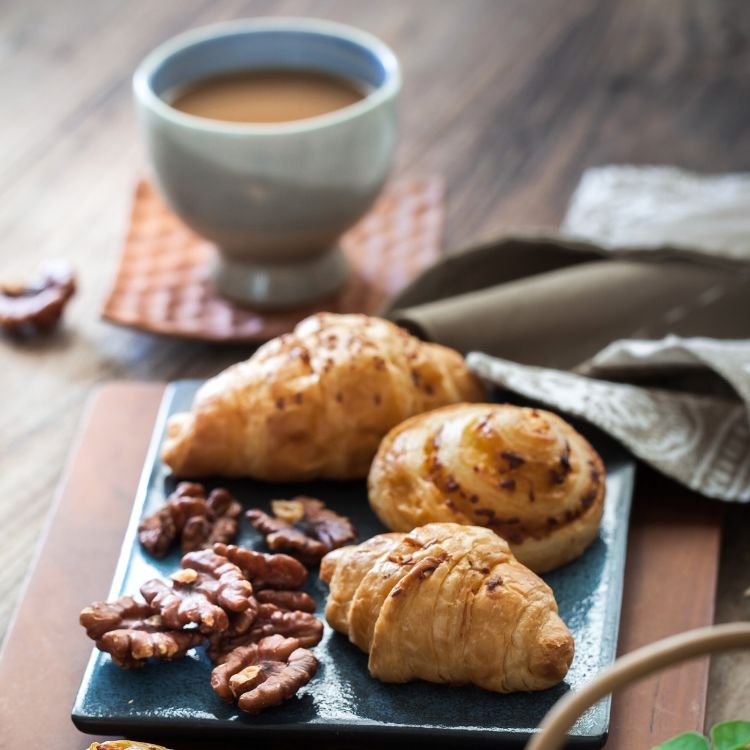
For a delightful treat, try pairing cardamom tea with cookies or other baked goods. The warm, spicy aroma of the tea complements the sweetness of the pastries.
Sipping on a cup of cardamom tea alongside a frothy coffee can also create a complementary flavor profile. The bold taste of coffee mingles with the spicy, fragrant cardamom to create a comforting combination.
Cardamom tea’s origins in India lend it to pairing well with Indian cuisine. You’ll discover that the tea’s distinctive flavor beautifully complements popular curry dishes, helping to cleanse your palate between bites.
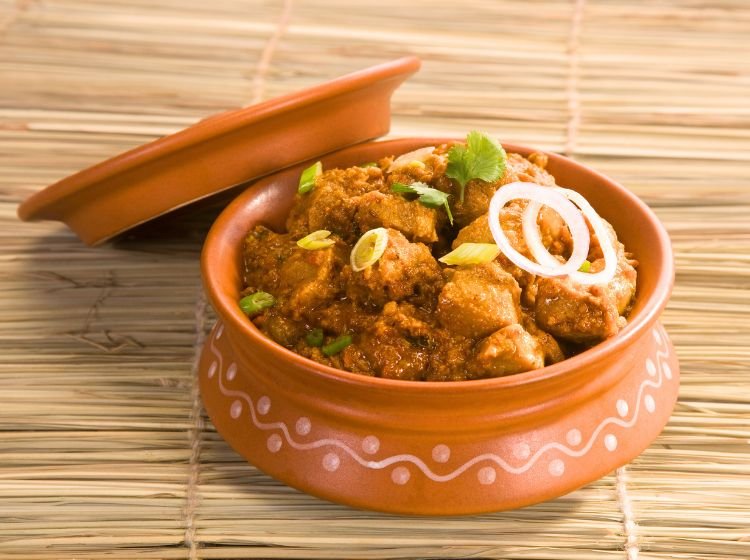
Additionally, cardamom tea can add an extra layer of flavor when enjoyed with Indian bread such as naan or roti.
Incorporating cardamom tea into your meal can elevate your experience when dining on rice and lentil dishes. The balance of flavors between the aromatic tea and savory rice or lentils creates a pleasant harmony in your taste buds.
If you’re a fan of spicy foods, cardamom tea can also blend well with various meat dishes, enhancing the taste of aromatic spices like cumin and coriander.
Whether you’re trying cardamom tea for the first time or simply looking for new ways to enjoy this versatile beverage, don’t hesitate to experiment with different pairings.
By matching cardamom tea with different foods, you’ll uncover a world of complementary flavors, enriching your culinary journey one sip at a time.
Storing and Preserving Cardamom
To store and preserve cardamom properly, put it in an airtight container and place it in inside a cabinet, as cardamom is sensitive to light, air, and moisture. Glass jars with tight-fitting lids or well-sealing plastic containers work well.
Cardamom can be quite an expensive spice, so preserving its freshness and aroma is crucial. If you have whole cardamom pods, crush them only when needed, as the whole pods keep their flavor for longer.
By following these guidelines, you’ll enjoy the rich, complex taste of your cardamom tea while preserving the freshness and potency of your cardamom supply.
Health Benefits of Cardamom Tea
Cardamom tea offers various health benefits due to its high concentration of antioxidants.
1. Antioxidant and Anti-Inflammatory Properties
This aromatic tea helps protect your body from oxidative stress and damage caused by free radicals.
Cardamom is also known for its anti-inflammatory properties, which can aid in reducing inflammation and promoting overall well-being.
2. Antimicrobial Effect
One notable health benefit of cardamom tea is its antimicrobial ability, which can help you combat bacteria and fungi.
The oil from cardamom seeds possesses antibacterial properties, making it an excellent choice for maintaining a healthy digestive system and preventing various infections.
Another great herbal option for treating digestive issues is cuachalalate tea. Read my guide about the cuachalalate tea benefits to learn more!
3. Promotes Cardiovascular Health
Cardamom tea is also known to lower blood pressure and improve circulation. By consuming this tea regularly, you can promote heart health and reduce your risk of developing cardiovascular diseases.
This Ayurvedic remedy also has the potential to positively impact cholesterol levels, thus promoting overall heart health.
4. Source of Iron
Cardamom is a natural source of iron, which is crucial for maintaining healthy blood and preventing conditions like anemia. It also contains a decent amount of magnesium and calcium.
As a caffeine-free alternative to traditional teas and coffee, you can enjoy cardamom tea without the side effects associated with excessive caffeine consumption.
I recommend that you also read my guide on the benefits of osmanthus tea — another flavorful herbal tea rich in antioxidants.
And the unique flavor of cardamom is not limited to just tea! It also lends itself well to essential oil blends.
When used in aromatherapy or skincare, cardamom essential oil can be combined with citrus oils, such as bergamot or grapefruit, or woody scents like cedarwood and sandalwood.
Play around with the ratios to create your personalized fragrance or wellness blend.
Cardamom Tea in Ayurveda and Traditional Medicine
In Ayurvedic medicine, cardamom tea has been cherished for its numerous health benefits and healing properties. As a tridoshic herb, cardamom helps balance all three doshas – Vata, Pitta, and Kapha.
However, if you’re trying to maintain Pitta balance, consume it in smaller amounts.
Historically, cardamom has been used as an herbal remedy especially for cleansing the stomach and promoting overall gastrointestinal health.
Cardamom tea is an excellent digestive aid, particularly effective in reducing bloating and intestinal gas. Its properties make it an ideal choice for those looking to improve their digestive health.
Moreover, in Ayurvedic medicine, it’s considered particularly beneficial for Kapha balance in the stomach and lungs.
Cardamom Tea FAQ
What does cardamom tea taste like?
Cardamom tea has a unique and distinct flavor that is both spicy and sweet. The taste of green cardamom is often described as being slightly minty, with hints of lemon and eucalyptus.
Green cardamom is often brewed with black tea, which provides a strong and robust base for the cardamom flavor to shine through.
How can I prepare cardamom tea with milk?
To prepare cardamom tea with milk, first, bring water to a boil in a tea kettle or saucepan. Add cardamom pods and turn the heat down to low, letting it simmer for a few minutes.
Next, add in milk and your choice of tea leaves and sweetener, if desired. Stir the mixture, and allow it to simmer for about one minute while stirring.
Remove from the heat and let the tea sit for a few minutes as the flavors infuse, and then serve.
Are there any side effects of drinking cardamom tea?
Cardamom is generally considered safe for most people when consumed in moderation. However, some individuals may experience allergies or gastrointestinal issues if they consume excessive amounts or have a sensitivity to the spice.
It’s also best to avoid consuming large quantities if you are pregnant or breastfeeding, as its effects on pregnancy and nursing have not been thoroughly studied.
What ingredients are needed for a simple cardamom tea recipe?
A simple cardamom tea recipe requires water, cardamom pods, and your choice of tea leaves (typically black tea or green tea). Optional ingredients include milk and sweeteners like sugar or honey.
You can also experiment with other spices like cinnamon or cloves to enhance the flavor.
Can I use ground cardamom to make tea?
Yes, you can use ground cardamom to make tea, but it’s important to note that the flavor may be slightly different from using whole cardamom pods.
When using ground cardamom, start with a small amount (about 1/4 to 1/2 teaspoon) and adjust according to your taste preferences. You can also use a tea infuser or a fine mesh strainer to avoid sediment in your cup.
Are you ready to get immersed in the world of cardamom tea?
To indulge in this exotic tea, you simply need water, cardamom pods, and any sweetener of your choice. The result is a flavorful and fragrant concoction that can transport you, even if momentarily, to a different time and place.
So, go ahead and give this regal tea a try – you might just discover a new favorite addition to your daily tea rituals.
Enjoy Your Healthy Cardamom Tea!
-Joonas

